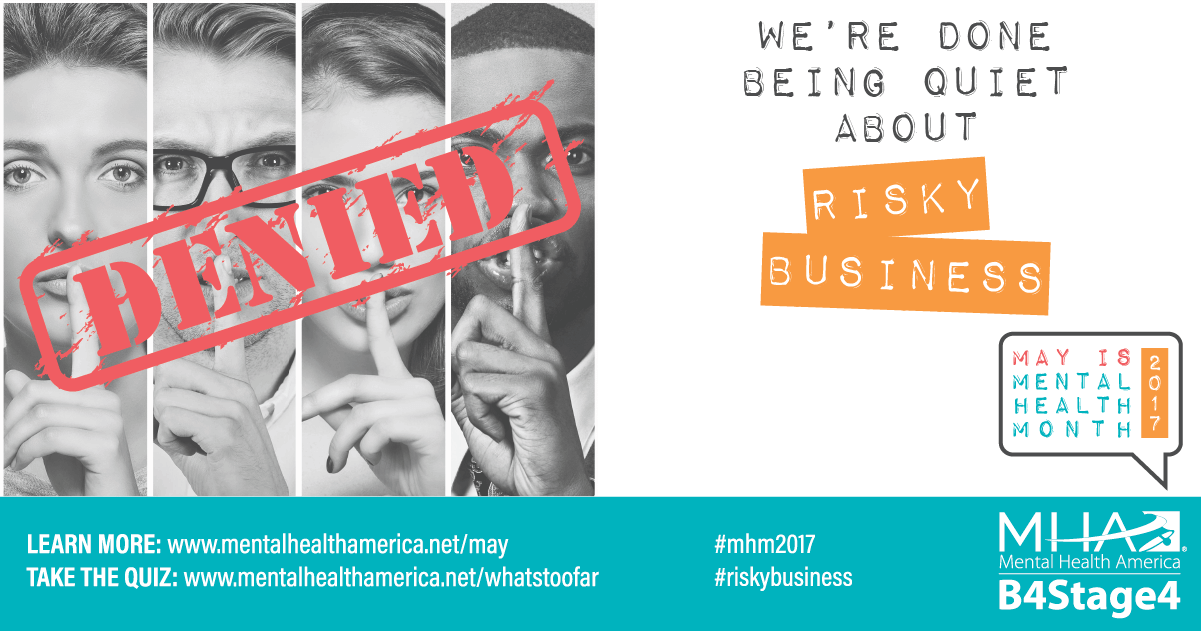May is Mental Health Month
A Message from the President
May is Mental Health Month. It’s an opportunity for people to raise awareness and eradicate stigma in an effort to proactively respond to and treat mental illness. In the case of other diseases such as cancer, heart disease or diabetes, people normally don’t wait years to initiate treatment. In fact, we take proactive steps to prevent or reverse disease, attempting to stop their progression. That is not always the case for individuals who are struggling with mental illness.
BY THE NUMBERS
One in 17−about 13.6 million−live with a serious mental illness such as schizophrenia, major depression or bipolar disorder.
Approximately 20 percent of youth ages 13 to 18 experience severe mental disorders in a given year. For ages 8 to 15, the estimate is 13 percent.
One-half of all chronic mental illness begins by the age of 14 and three-quarters by age 24.
Despite effective treatment, there are long delays−sometimes decades−between the first appearance of symptoms and when people get help. To say the impact on individuals, families and society is significant in an enormous understatement.
RISKY BUSINESS
This year’s theme for May is Mental Health Month—Risky Business—is a call to educate ourselves and others about habits and behaviors that increase the risk of developing or exacerbating mental illnesses, or could be signs of mental health problems themselves.

 Activities like compulsive sex, recreational drug use, obsessive internet use, excessive spending, or disordered exercise patterns can all be behaviors that can disrupt someone’s mental health and potentially lead them down a path toward crisis. Individuals and communities must raise awareness to the risks that these types of behaviors present—especially to young people—and help people who may be struggling to detect early warning signs and seek help early, before Stage 4.
Activities like compulsive sex, recreational drug use, obsessive internet use, excessive spending, or disordered exercise patterns can all be behaviors that can disrupt someone’s mental health and potentially lead them down a path toward crisis. Individuals and communities must raise awareness to the risks that these types of behaviors present—especially to young people—and help people who may be struggling to detect early warning signs and seek help early, before Stage 4.
It’s important to remember that mental health is essential to everyone’s overall health and well-being, and mental illnesses are common and treatable. Yet, people experience symptoms of mental illnesses differently—and some engage in potentially risky behaviors to avoid or cover up symptoms of a potential mental health problem.
The recognition of May as Mental Health Month was started 68 years ago by Mental Health America, to raise awareness about mental health conditions and the importance of good mental health for everyone. Early identification and intervention are key to treating mental health conditions. However, stigma and lack of knowledge are at times a hindrance to receiving treatment.
Knowing the signs and taking action are vital. Prevention, early identification and intervention, and integrated services work. When we engage in prevention and early identification, we can help reduce the burden of mental illness by identifying symptoms and warning signs early—and provide effective treatment Before Stage 4.
Today there are a wide variety of treatment options and supports that can provide life-changing results. I hope you’ll join DePaul in spreading the word and being part of the solution for those in our community.
